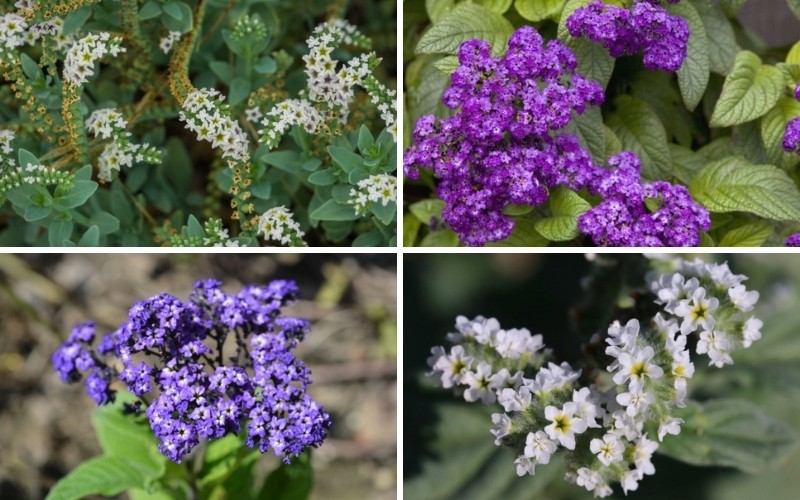
Also known as Heliotropium arborescens, heliotrope is the more common name used for a popular variety of gardening and landscape flower.
It is a sweet-smelling flowering shrub, highly desired and widely prized for its cute clustering blooms and delicate petals. This flower species can be grown as either an annual or a perennial depending on where and when it is planted and how it is cared for.
There are many amazing and colorful varieties of heliotrope to choose from. Highlighted here are some great options to get you started!
Heliotrope Marine
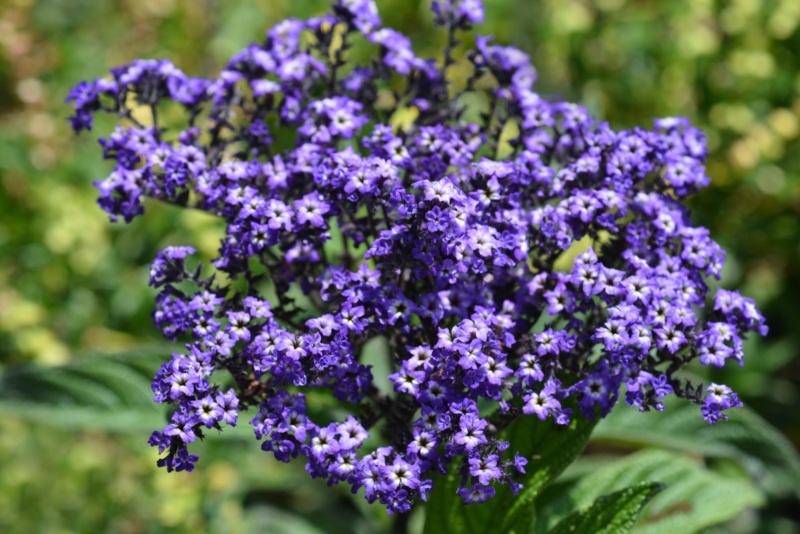
Among the most common varieties, this plant features deeply violet-colored flowers in large clusters. Flowering clumps can reach up to 12 to 18 inches in spread. This delightfully fragrant plant produces the most blooms throughout spring, summer, and even into autumn. It needs warmer weather and can tolerate dry conditions. Cold exposure will quickly kill it, so it is best grown indoors or as an annual in colder regions.
Dwarf Marine
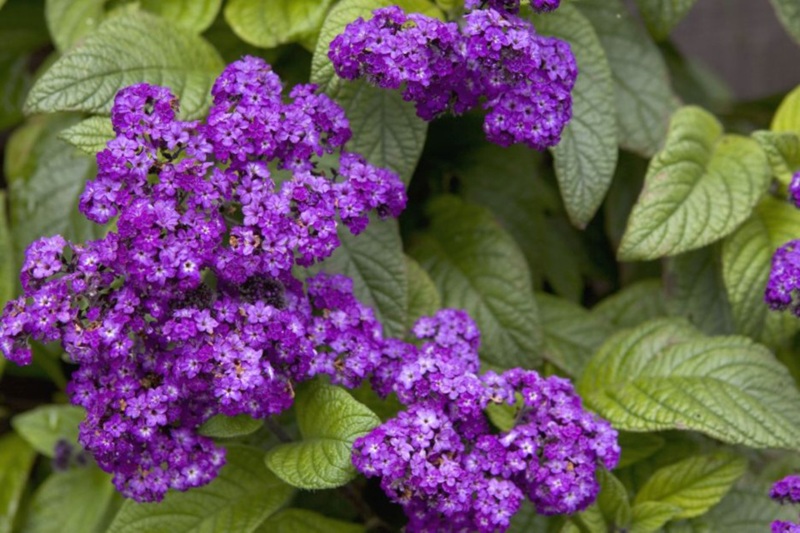
This variety is best known for its miniature size and more compact shape and growth habits. The gorgeous blooms are known attractors of pollinators and beneficial insects. Dwarf marines average around 35 cm in size and the most common blook color are shades of blue and purple. It needs partial shade and prefers moist yet well-drained soils. Pruning will help it stay compact and encourage reblooming until the weather turns cold.
European Heliotrope
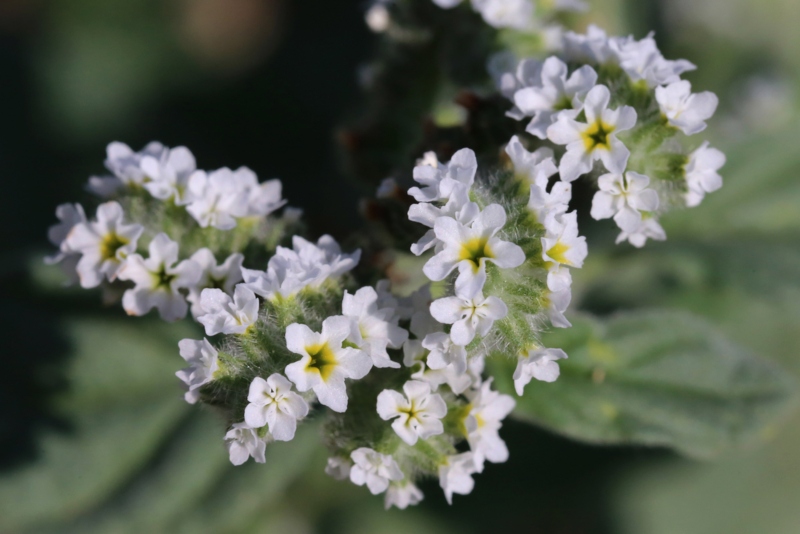
Native to Europe as the name implies it can be found growing wild in America along roadsides, in fields, and in ditches. This plant species has a more aggressive growth habit and can reach 40 cm in size. Blooms are most commonly spiky, white flowers, and the plant is covered with shiny green leaves. It is a tough plant and can survive with minimal care once established and handles heat and direct sun or shade equally well.
Indian Heliotrope
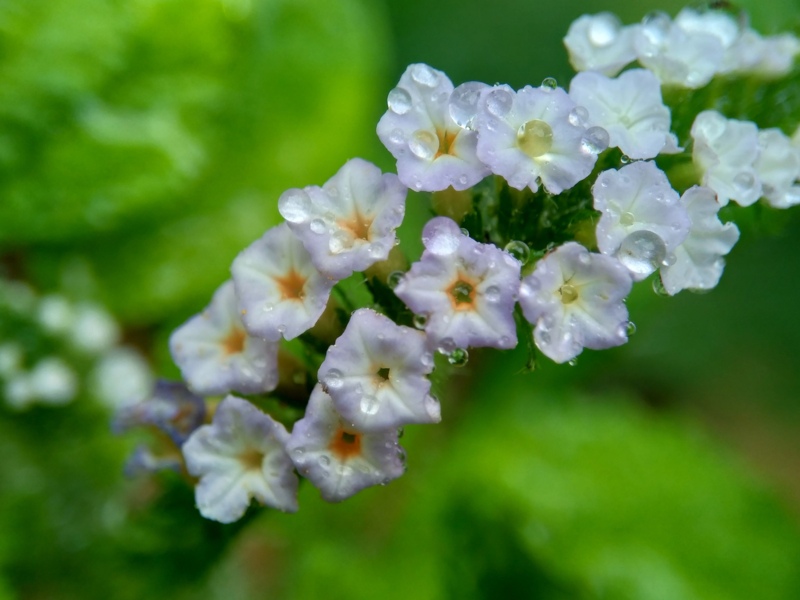
This variety features a more erect, branched like growth pattern. The tall flower spikes can reach from 15-50 cm. Like other varieties of heliotrope, it is sweet-smelling and can be found in several colors. It has been used for medicinal purposes for centuries but today is popular as a garden accent plant. It needs a mix of sun and shade though it can grow in full sun once well established. Soil should be well-draining and loose.
Salt Heliotrope
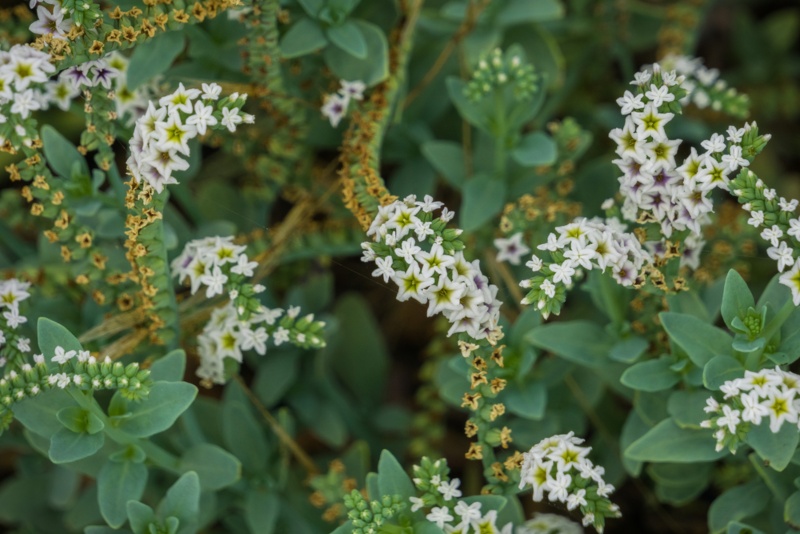
Unlike other popular examples of the heliotrope species, salt heliotrope generally produces flowers later in the season. Blooms can be found as late as November. The salt heliotrope needs soils that are moist and boggy with some salt content as well as full sun exposure for the best growth. At maturity, these shrubs can reach nearly 2 ft in height and spread. Flowers are generally white to creamy yellow in color and are highly fragrant.
Blue Heliotrope
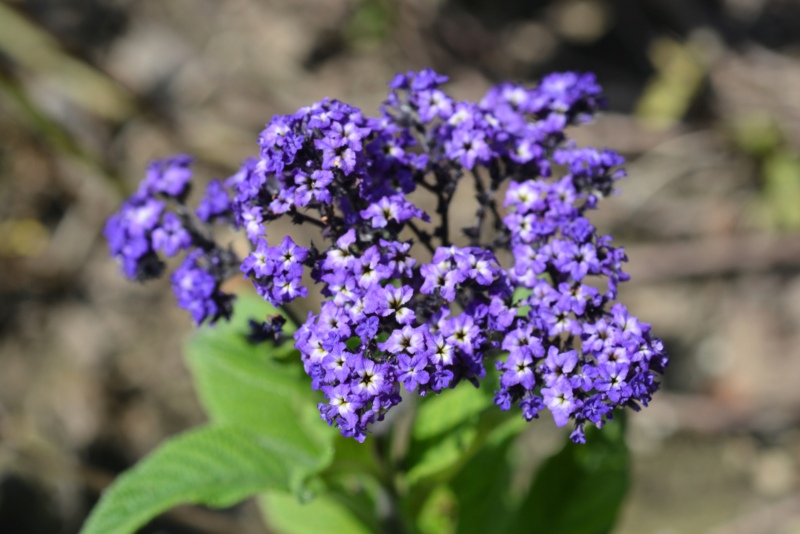
One of the lower growing varieties, blue heliotrope has a compact growth pattern with branched stems that come out from a central taproot. The leaves are long, hairy, with wavy margins. Flower stems are purple to blue in color and 5 to 8mm in length. These flowers tend to elongate and become spikier as the plant ages. Blooms are most prolific in the spring and summer months when grown in sunny moist locations.
Tree Heliotrope
The largest variety by far, this species can reach mature heights of 3 to 12 ft. Tree heliotrope has a wide range of wood and medicinal uses. It boasts beautiful trunk and bark designs and colors and can be used as an attractive accent plant in the landscape. It is slow-growing and takes many years to get to a mature size. This varsity needs lots of sun and room to grow and benefits from regular fertilization and pruning.
Heliotropium Hirsutissimum
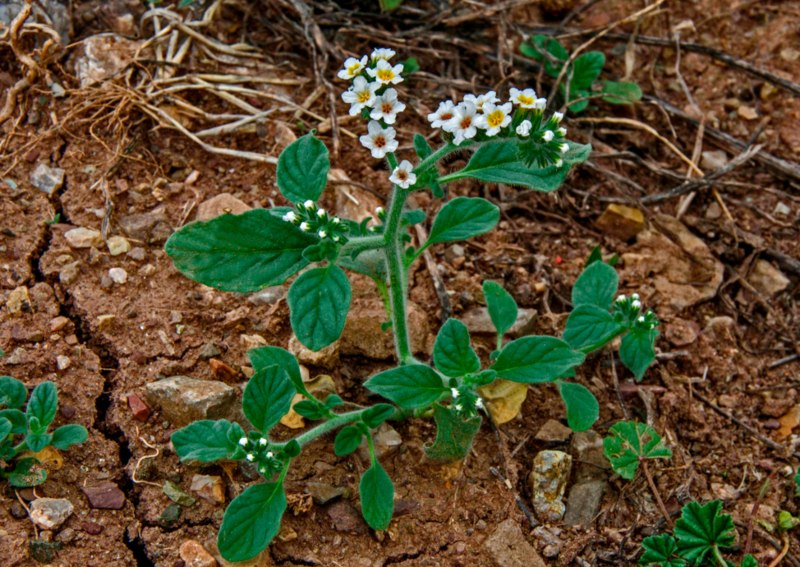
It boasts white-colored flowers that contain homogeneous seeds. The clusters are fragrant and brilliantly colored though the most common variety features white and cream blooms. These plants need to be well-watered and do best in moist yet well-drained soils. The flowers tend to move with the sun like a sunflower does so the more sun they receive the more this movement occurs.
If you are looking for some colorful plants to include in your landscape this season then you need to consider the beautiful heliotrope. With plenty of colors, sweet aromas, interesting growth patterns, and easy to care for needs, it is a smart choice for gardeners of all skill levels. This flower species can be grown as either an annual or a perennial depending on where and when it is planted and how it is cared for. With these great varieties in hand, you are well on your way to creating a garden space that will be the talk of the entire neighborhood!




